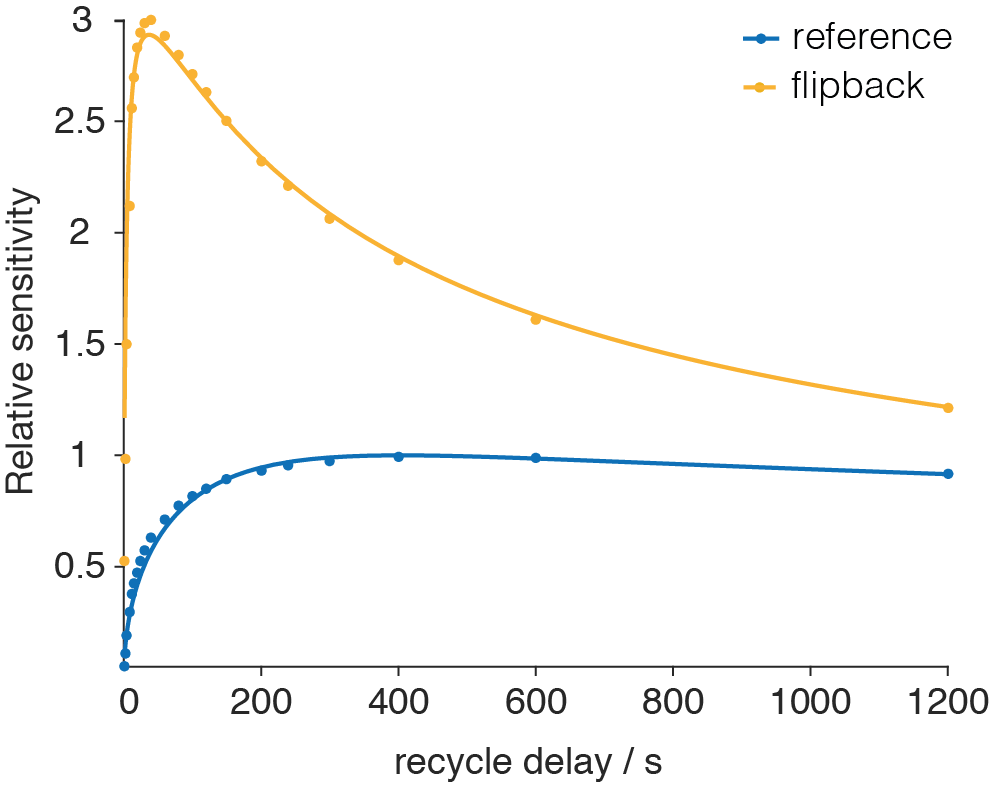Improving the sensitivity of DNP NMR of microcrystalline solids by flip-back recovery of bulk proton magnetization
Solid-state NMR is an important analytical technique, commonly used for collecting information about the structure and dynamics of biomolecules and powdered solids, such as pharmaceuticals and inorganic materials. One of the main drawbacks of ssNMR is its relatively low sensitivity, especially for nuclei like 13C and 15N, which have low gyromagnetic ratios and low natural abundance. DNP methods can improve the sensitivity of NMR of microcrystalline solids by using 1H spin diffusion to transfer polarization from the surface of the particles and towards the center.1 These systems often have long polarization build-up times and require long recycling periods to reach maximum sensitivity, which imposes a practical limitation on the enhancements routinely achieved.
We have shown how the sensitivity of hyperpolarized cross-polarization experiments on microcrystalline solids can be improved by pushing the bulk proton magnetization remaining after decoupling back to the direction of the main magnetic field.2 Three powdered solids, theophylline, L-histidine monohydrochloride monohydrate and salicylic acid, with build-up times spanning two orders of magnitude were used for the experiments and in all cases sensitivity gains up to a factor of three were obtained. In addition, the flip-back pulse shortens the recycle periods needed and consequently reduces experimental time.

Figure 1. Experimentally observed sensitivity improvements of salicylic acid. The flip-back cross-polarization experiment (yellow) is compared to the same experiment without the flip-back pulse (blue) and the curves are fit to the data using a biexponential recovery model for longitudinal I-spin magnetization. The sensitivity is normalized to maximum sensitivity without a flip-back pulse.
[1] Rossini et al., J. Am. Chem. Soc., 2012, 134, 16899-16908.
[2] Tegenfeldt and Haeberlen, J. Magn. Reson., 1979, 36, 453-457.